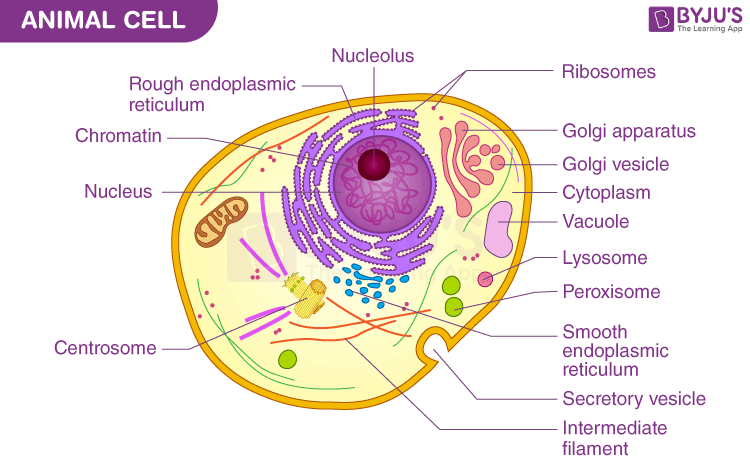Animal cells are eukaryotic cells that contain a membrane-bound nucleus. They are different from plant cells in that they do contain cell walls and chloroplast.
The animal cell diagram is widely asked in Class 10 and 12 examinations and is beneficial to understand the structure and functions of an animal. A brief explanation of the different parts of an animal cell along with a well-labelled diagram is mentioned below for reference.
Also Read Different between Plant Cell and Animal Cell
Well-Labelled Diagram of Animal Cell

The Cell Organelles are membrane-bound, present within the cells. There are various organelles present within the cell and are classified into three categories based on the presence or absence of membrane.

Listed below are the Cell Organelles of an animal cell along with their functions.
- The cell membrane is a double-layered membrane made up of phospholipids that surrounds the entire cell. The membrane is selectively permeable and allows only certain molecules to pass through.
- Cytosol is the fluid present within a cell that is made up of water and ions such as potassium, proteins and small molecules.
- Cytoskeleton is the network of tubules and filaments found throughout the cytoplasm. It provides proper shape to the cell and plays a role in cell signalling.
- The nucleus contains the genetic material DNA located in the nucleolus region of the nucleus. The nucleus is separated from the rest of the cell by a nuclear membrane. It also regulates the growth and division of cells.
- Ribosomes are found freely in the cytoplasm of the cell or attached to the membranes of endoplasmic reticulum. They help in the synthesis of proteins.
- The endoplasmic membrane consists of a network of membranous sacs called cisternae that branches off from the nuclear membrane. It is of two types, rough endoplasmic reticulum and smooth endoplasmic reticulum. It helps in transporting proteins synthesised by the ribosomes.
- The vesicles help in transporting molecules from one organelle to another.
- Golgi apparatus receives proteins from endoplasmic reticulum and packages them into vesicles.
- Mitochondria is also known as the “powerhouse of the cell”. The process of cellular respiration occurs here during which energy is released in the form of ATP.
Also Read : Eukaryotic Cells
For more information on diagram of animal cell, keep visiting BYJU’S Biology website.
Comments